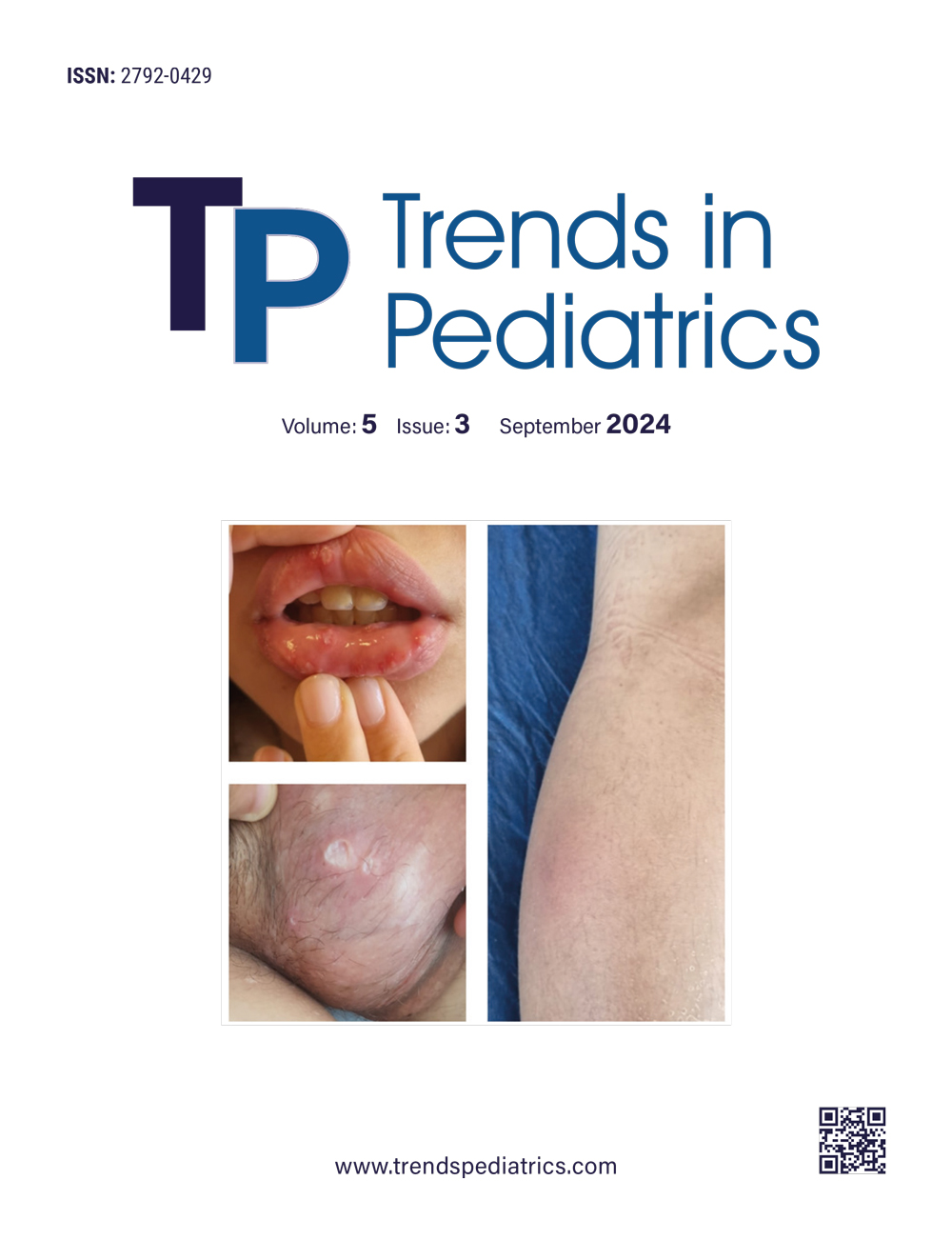Abstract
A case study reveals a prenatal diagnosis of congenital chloride diarrhea (CCD) in a consanguineous couple’s fetus. Despite successful amnioreduction, persistent polyhydramnios led to genetic testing. A multidisciplinary approach involved obstetricians, geneticists, and neonatologists. Whole-exon sequencing identified a homozygous de novo SLC26A3 gene mutation. Treatment included oral electrolyte supplementation and lansoprazole, resulting in improvement. The case underscores the importance of early detection and intervention in managing CCD.
Healthcare providers should consider early prenatal screening, including advanced genetic testing such as whole-exon sequencing, for couples with consanguineous relationships due to the association of congenital chloride diarrhea with such unions. A multidisciplinary approach involving obstetricians, geneticists, and neonatologists is crucial for comprehensive management, emphasizing the need for close collaboration among healthcare professionals.
Keywords: chloride diarrhea, congenital, SLC26A3 gene
References
- Wedenoja S, Höglund P, Holmberg C. Review article: the clinical management of congenital chloride diarrhoea. Aliment Pharmacol Ther. 2010;31:477-85. https://doi.org/10.1111/j.1365-2036.2009.04197.x
- Saneian H, Bahraminia E. Congenital chloride diarrhea misdiagnosed as pseudo-Bartter syndrome. J Res Med Sci. 2013;18:822-4.
- Hui P, Kanjilal S, Biswas T, Dutta AK, Bhattacharjee D, Das MK. Congenital chloride diarrhea presenting as dilated fetal bowel loops. Pediatr Neonatol. 2022;63:653-4. https://doi.org/10.1016/j.pedneo.2022.06.004
- Imada S, Kikuchi A, Horikoshi T, et al. Prenatal diagnosis and management of congenital chloride diarrhea: a case report of 2 siblings. J Clin Ultrasound. 2012;40:239-42. https://doi.org/10.1002/jcu.21895
- Gils C, Eckhardt MC, Nielsen PE, Nybo M. Congenital chloride diarrhea: diagnosis by easy-accessible chloride measurement in feces. Case Rep Pediatr. 2016;2016:2519498. https://doi.org/10.1155/2016/2519498
- Sun M, Tao N, Liu X, Yang Y, Su Y, Xu F. Congenital chloride diarrhea in patient with SLC26A2 mutation - analysis of the clinical phenotype and differential diagnosis. Pediatr Endocrinol Diabetes Metab. 2021;27:51-6. https://doi.org/10.5114/pedm.2020.97465
- Bhardwaj S, Pandit D, Sinha A, Hari P, Cheong HI, Bagga A. Congenital chloride diarrhea - novel mutation in SLC26A3 gene. Indian J Pediatr. 2016;83:859-61. https://doi.org/10.1007/s12098-015-1944-7
- Doğan E, Sevinç E, Göktaş MA, Ekmen S, Yıldız N. SLC26A3 mutation in Turkish neonate and her sibling with congenital chloride diarrhea. Turk Pediatri Ars. 2020;55:76-8. https://doi.org/10.5152/TurkPediatriArs.2018.6929
- Di Meglio L, Castaldo G, Mosca C, et al. Congenital chloride diarrhea clinical features and management: a systematic review. Pediatr Res. 2021;90:23-9. https://doi.org/10.1038/s41390-020-01251-2
- Gamble JL, Fahey KR, Appleton J, MacLachlan E. Congenital alkalosis with diarrhea. The Journal of Pediatrics. 1945;26:509-18. https://doi.org/10.1016/S0022-3476(45)80078-1
- Elrefae F, Elhassanien AF, Alghiaty HA. Congenital chloride diarrhea: a review of twelve Arabian children. Clin Exp Gastroenterol. 2013;6:71-5. https://doi.org/10.2147/CEG.S40620
- Lee DH, Park YK. Antenatal differential diagnosis of congenital chloride diarrhea: a case report. J Obstet Gynaecol Res. 2012;38:957-61. https://doi.org/10.1111/j.1447-0756.2012.01876.x
- Kirkinen P, Jouppila P. Prenatal ultrasonic findings in congenital chloride diarrhoea. Prenat Diagn. 1984;4:457-61. https://doi.org/10.1002/pd.1970040611
- Bin Islam S, Mazumder RN, Chisti MJ, et al. Captopril in congenital chloride diarrhoea: a case study. J Health Popul Nutr. 2015;33:214-9.
- Brocklehurst JR, Walker AC. Cholestyramine in treatment of congenital chloride diarrhoea. Med J Aust. 1978;1:504-5. https://doi.org/10.5694/j.1326-5377.1978.tb112580.x
- Canani RB, Terrin G, Cirillo P, et al. Butyrate as an effective treatment of congenital chloride diarrhea. Gastroenterology. 2004;127:630-4. https://doi.org/10.1053/j.gastro.2004.03.071
- Pieroni KP, Bass D. Proton pump inhibitor treatment for congenital chloride diarrhea. Dig Dis Sci. 2011;56:673-6. https://doi.org/10.1007/s10620-010-1491-z
- Hihnala S, Höglund P, Lammi L, Kokkonen J, Ormälä T, Holmberg C. Long-term clinical outcome in patients with congenital chloride diarrhea. J Pediatr Gastroenterol Nutr. 2006;42:369-75. https://doi.org/10.1097/01.mpg.0000214161.37574.9a
- Paludetti G, Conti G, DI Nardo W, et al. Infant hearing loss: from diagnosis to therapy Official Report of XXI Conference of Italian Society of Pediatric Otorhinolaryngology. Acta Otorhinolaryngol Ital. 2012;32:347-70.
Copyright and license
Copyright © 2024 The author(s). This is an open-access article published by Aydın Pediatric Society under the terms of the Creative Commons Attribution License (CC BY) which permits unrestricted use, distribution, and reproduction in any medium or format, provided the original work is properly cited.














